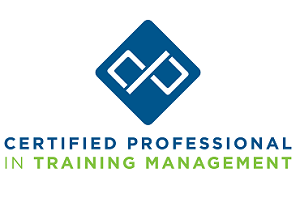Combining diversity, equity and inclusion (DEI) training with immersive learning can create realistic scenarios to help challenge learners’ perspectives and biases, enabling them to experience the impact of DEI firsthand.
Limitations of Traditional DEI Training Methods
Traditional DEI training methods, often reliant on lectures and workshops, struggle to drive lasting behavioral change, especially in skill-based organizations aiming to build a future-ready workforce. These methods, lacking interactivity and practical application, fail to engage multi-generational learners effectively.
Without fostering emotional connections or addressing deep-seated biases, traditional approaches fall short in promoting real-world inclusive practices. Additionally, a one-size-fits-all model overlooks the diverse needs and experiences of a multigenerational workforce, reducing overall effectiveness. Modern learning and development (L&D) programs must embrace personalized learning, offering interactive and tailored training to meet the evolving demands of a diverse, skill-based workforce.
Why Immersive DEI Training Outperforms Traditional Methods in Skill-Based Organizations
- Enhanced Engagement and Retention: Immersive DEI training leverages interactive elements such as simulations, role-playing and virtual reality, which can significantly boost learner engagement. Active participation can help learners retain information better than passive lecture-based methods, leading to a deeper understanding and commitment to inclusive practices.
- Real-World Application: Immersive training provides practical scenarios that mirror real workplace situations. This hands-on approach helps employees apply DEI principles in their daily interactions, fostering a more inclusive workplace. Skill-based organizations benefit as employees can immediately implement what they’ve learned, enhancing the overall workplace culture.
- Personalized Learning Experiences: Unlike traditional one-size-fits-all methods, immersive DEI training can be tailored to address the specific needs of diverse learner groups, including multigenerational employees. Personalized learning paths ensure that each individual receives relevant and impactful training, increasing the effectiveness of the program.
- Higher ROI: Immersive training methods often lead to more significant behavioral changes and better performance outcomes. As employees become more adept at inclusive practices, organizations see improvements in team collaboration, employee satisfaction and retention. These positive outcomes translate into a higher return on investment (ROI) for DEI training programs.
- Right-Skilling for the Future Workforce: Immersive DEI training equips employees with the necessary skills to thrive in a diverse and dynamic work environment. By focusing on right-skilling, organizations ensure their workforce is prepared for future challenges, promoting adaptability and resilience. This strategic approach to training supports long-term organizational growth and competitiveness.
Potential Benefits of Immersive DEI Training Programs
Immersive DEI training programs can help unlock the full potential of an organization’s workforce while transforming its inclusivity and performance.
- Supporting DEI Behavior Change: Immersive DEI training drives lasting behavior change by offering realistic, scenario-based experiences. This helps skill-based organizations ensure employees practice and internalize inclusive behaviors, benefiting a multigenerational workforce by addressing diverse learning styles.
- Active Learning and Participant Engagement: Immersive training uses interactive elements like simulations and role-playing to actively engage participants. This method keeps learners involved and facilitates deeper understanding, essential for skill-based organizations and diverse generational teams.
- Scalable Coaching Opportunities: Digital platforms enable scalable coaching, reaching more employees without compromising quality. This benefits global skill-based organizations and allows targeted coaching for different generational cohorts within the workforce.
- Enhanced Retention and Recall of Training Content: Immersive techniques, such as virtual reality, enhance retention and recall by engaging multiple senses. This is crucial for skill-based organizations where knowledge retention impacts performance and helps bridge generational learning preferences.
- Personalized Learning Paths for Individual Needs: Immersive DEI training offers tailored learning paths, addressing varying levels of prior knowledge and experience. This customization ensures each member of a multigenerational workforce receives relevant and impactful education.
- Immediate Feedback and Real-Time Adjustments: Immersive training provides immediate feedback and real-time adjustments, helping learners correct mistakes and reinforce positive behaviors quickly. This ensures employees can adapt their behaviors to align with DEI principles effectively.
- Increased Motivation and Learner Satisfaction: The interactive nature of immersive DEI training boosts motivation and learner satisfaction. Participants feel more invested in their learning, which helps engage all generations within the workforce.
- Facilitation of Emotional and Cognitive Connections to DEI Principles: Immersive methods create strong emotional and cognitive connections to DEI principles through realistic scenarios. This approach ensures employees are both intellectually and emotionally committed to inclusive practices, fostering a truly inclusive workplace.
DEI Issues That Can be Addressed Through Immersive Learning
While there are several possibilities, the common issues can be addressed include:
- Unconscious bias: Simulated real-world scenarios can help learners recognize and challenge their biases in a safe environment, address unconscious bias, promote awareness and foster inclusive behaviors.
- Microaggressions: Present learners with realistic scenarios to experience and recognize subtle forms of discrimination or marginalization and make efforts to prevent them in their professional and personal interactions.
- Empathy development: Immerse learners in scenarios that allow them to experience diverse perspectives and challenges firsthand to encourage learners to empathize more authentically and compassionately.
- Cultural competence: Create opportunities for learners to engage directly with diverse cultural contexts and challenges, develop cultural competence, deepen their understanding of different cultural norms and practices and collaborate more effectively in multicultural environments.
- Inclusive leadership: Provide leaders with simulations of real-world DEI challenges to hone their skills in prioritizing fairness and equity, effectively managing diverse teams and creating an inclusive workplace culture.
- Inequality awareness: Vividly illustrate systemic barriers and disparities faced by marginalized groups, to help learners understand and confront the root causes of inequality.
- Communication barriers: Provide learners with scenarios that simulate diverse communication styles, language barriers and cultural differences, to help overcome communication barriers.
Immersive Learning Options that Can Blur the Lines Between Reality and Learning Environments
VR/AR/XR Technologies
Virtual, augmented and extended reality (VR/AR/XR) technologies create lifelike environments where learners can experience and practice DEI principles firsthand. These immersive experiences help employees in skill-based next-gen organizations engage deeply with the content, making abstract DEI concepts tangible and applicable in real-world settings.
Simulation Training
Simulation training provides realistic scenarios that mirror workplace challenges, allowing employees to practice DEI skills in a safe, controlled environment. This method enhances problem-solving abilities and prepares employees for actual situations, making it ideal for skill-based organizations focused on practical application.
AI-Powered Role-Play Learning
AI-powered role-play learning offers dynamic, interactive sessions where learners engage with virtual characters. This technology adapts responses based on the learner’s actions, providing personalized feedback and reinforcing DEI principles. It’s particularly effective for next-gen organizations seeking to tailor training to individual learning needs.
Experiential Learning
Experiential learning immerses employees in activities that require them to apply DEI concepts directly. This hands-on approach fosters a deeper understanding and retention of DEI principles, which is crucial for skill-based organizations aiming to instill lasting behavioral changes.
Scenario-Based Learning
Scenario-based learning presents learners with specific, relevant situations they might encounter in the workplace. This method encourages critical thinking and decision-making, helping employees practice inclusive behaviors and better prepare for real-life challenges in skill-based environments.
Interactive Storytelling
Interactive storytelling uses engaging narratives to teach DEI principles, allowing learners to explore different perspectives and outcomes based on their choices. This approach makes learning memorable and relatable, enhancing emotional connections to DEI concepts and supporting the development of a more inclusive workplace in next-gen organizations.
- Transformative use cases of immersive learning in DEI training programs
safe and controlled learning spaces: Immersive DEI training creates environments where learners can safely develop empathy and effective communication skills. This is essential for skill-based organizations where practical, hands-on learning is critical. - VR for first-hand experiences: Using VR, learners can gain a sense of presence and immersion in diverse perspectives and challenges. This technology helps employees in skill-based roles interact with virtual situations, deepening their understanding of DEI principles and promoting inclusive behaviors.
- Real-world role-plays: Role-playing scenarios simulate workplace interactions and diversity challenges. These exercises can enable employees to navigate diversity and inclusion more effectively in their professional roles, which is crucial for skill-based organizations that value practical application.
- Simulations and scenarios for practice and reflection: Immersive DEI training employs simulations and realistic scenarios, allowing learners to apply theoretical knowledge to real-world situations. This enhances problem-solving skills and encourages critical reflection on diversity-related challenges.
- Personalized learning and tailored content: Customizable training modules address specific diversity and inclusion issues relevant to the organization. This personalized approach helps skill-based organizations develop strategies and skills that foster a more inclusive workplace culture.
Let’s take a look at a few powerful case studies:
Case Study 1: AI-Based Branching Roleplay
To raise awareness about addressing sexism and sexual harassment, we designed branching scenarios with AI avatars. The scenarios revolve around addressing inappropriate remarks made by different characters with a list of responses to choose from. By way of feedback, the learning content is disseminated.

Case Study 2: Adaptive Learning Pathways
To help employees of a global organization build cultural intelligence skills for effective communication and collaboration, we developed an adaptive learning platform where learners input the name of the individual they wish to interact with. Based on the individual’s personality profile and culture, the platform offers personalized resources and learning pathways, enabling quick access to important learning content.

Effectiveness of Immersive DEI Training: Top 5 Essential Considerations
Immersive DEI training programs are pivotal in skill-based organizations, ensuring customized, psychologically safe, authentic, practically applicable and measurable learning experiences.
- Customize approaches for an organization’s unique workplace realities: Tailor immersive DEI training to address specific challenges and dynamics within skill-based organizations to ensure relevance and applicability, enhancing engagement and learning outcomes.
- Factor for psychological safety in learning environments: Create a safe and supportive atmosphere where employees feel comfortable exploring sensitive DEI topics fosters open dialogue and genuine learning experiences, crucial for a future-ready workforce.
- Authenticity and realistic experiences: Incorporate real-world scenarios and diverse perspectives in immersive training builds empathy and prepares employees to navigate complex DEI issues authentically, aligning with the practical needs of next-gen organizations.
- Importance of experience and application in learning: Emphasize hands-on practice and application of DEI principles, allowing employees to develop practical skills that can be immediately applied in their roles, enhancing ROI and fostering a culture of inclusion.
- Measuring the impact and effectiveness of the programs: Implement robust evaluation metrics to assess behavioral changes and performance improvements resulting from immersive DEI training to ensure ongoing optimization and alignment with organizational goals in skill-based environments.
Conclusion
In the evolving work landscape, prioritizing DEI is critical. Traditional methods often fall short in fostering lasting change and building inclusive cultures. Immersive DEI training, utilizing VR, AR and simulations, offers a transformative approach. It creates environments where employees in skill-based organizations can safely explore sensitive topics, develop empathy and practice inclusive behaviors. Evaluating these programs provides valuable insights into ROI and tangible impacts, which are essential for cultivating a future-ready workforce and fostering a truly inclusive workplace culture.




